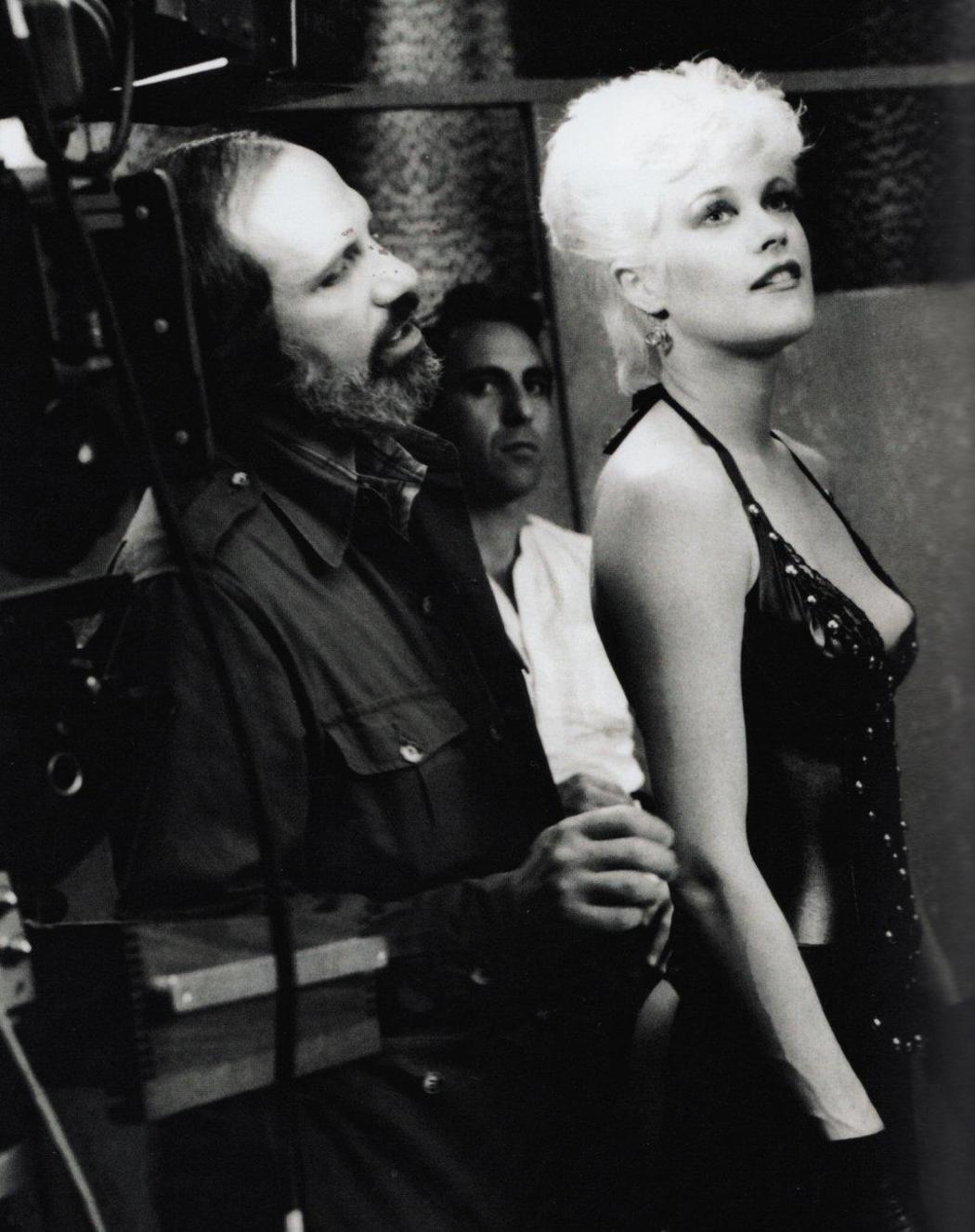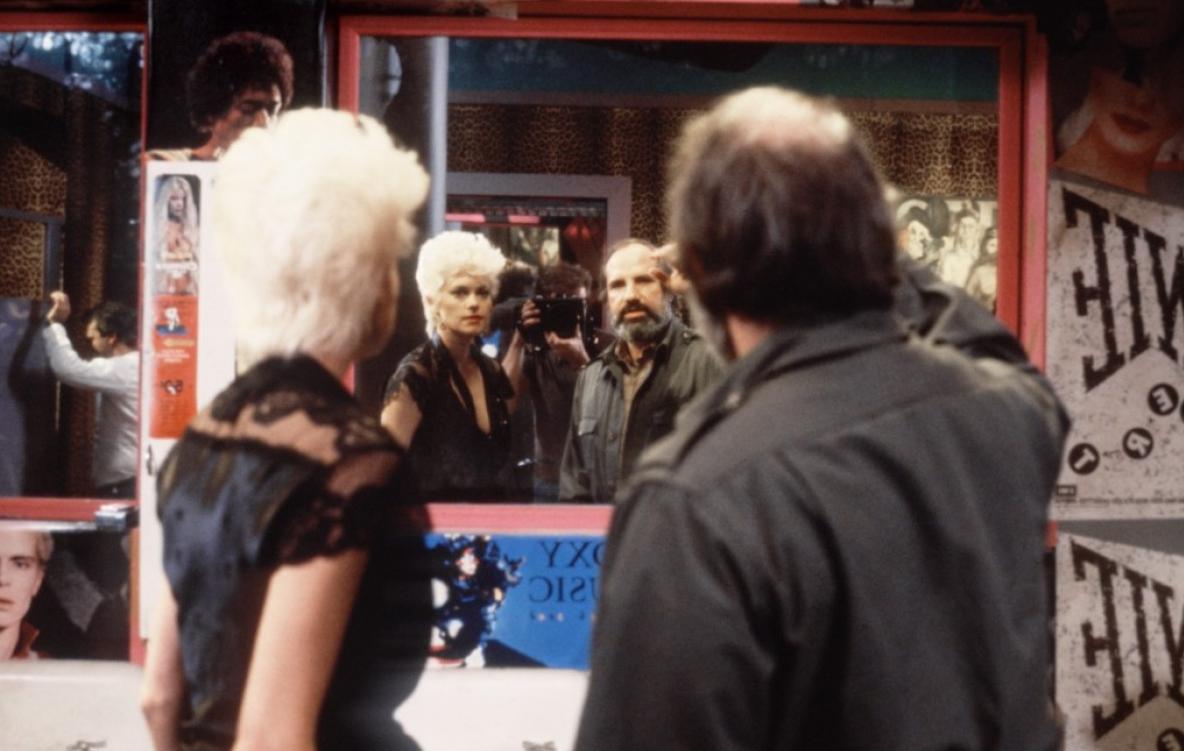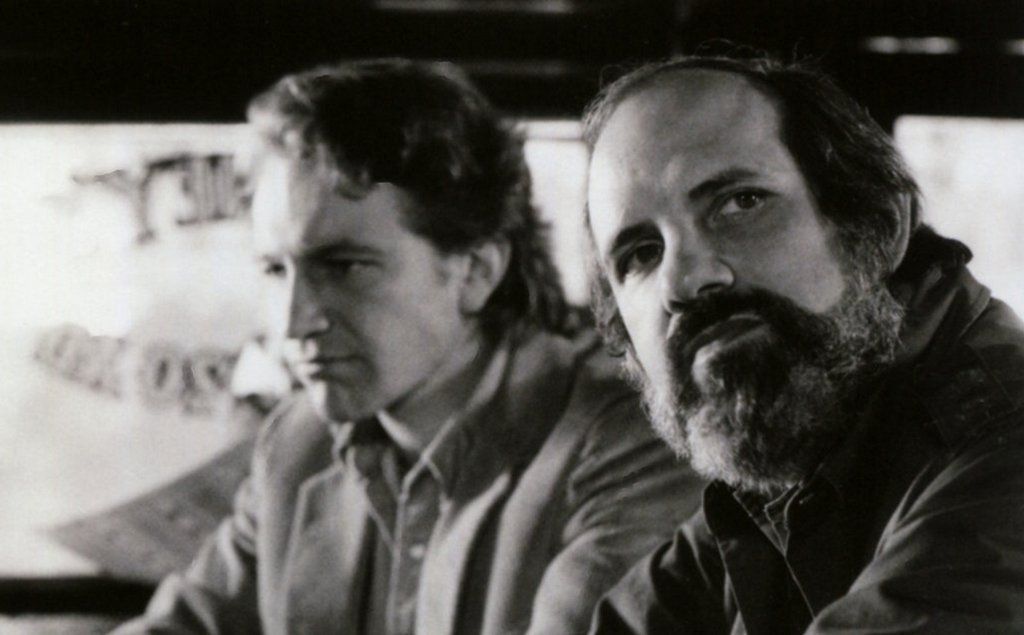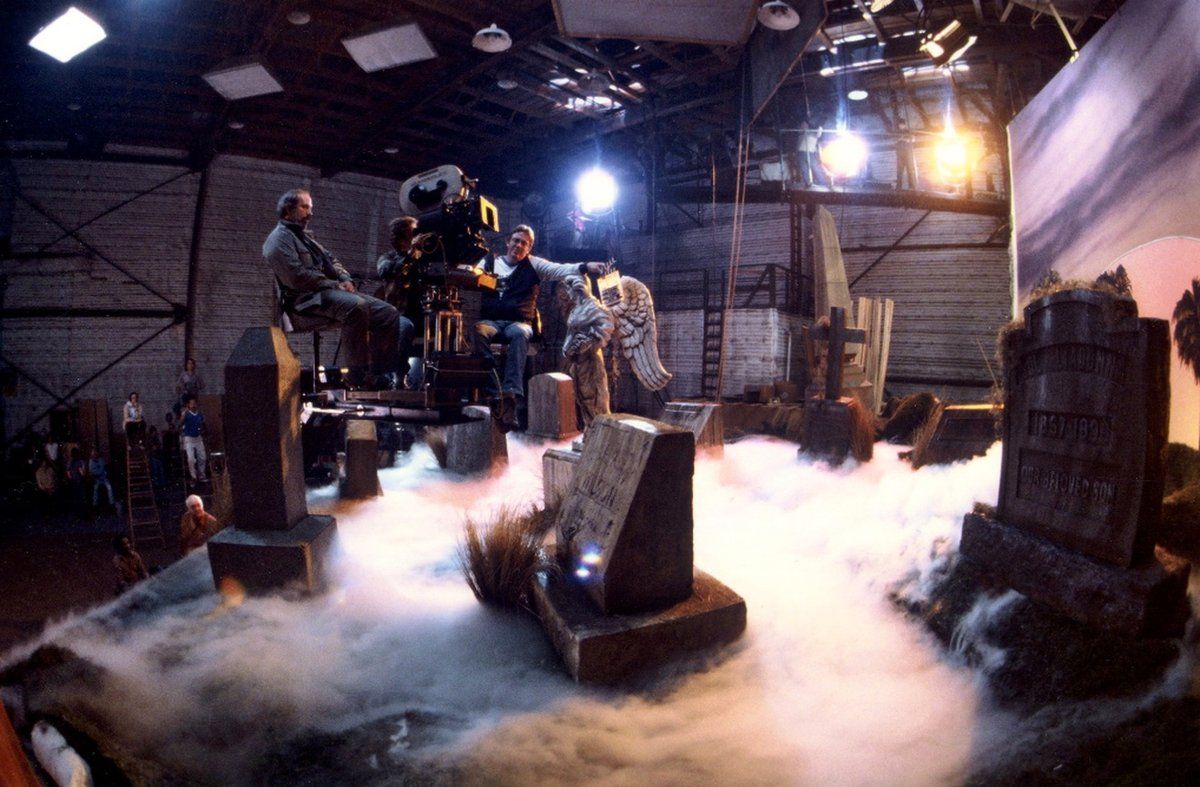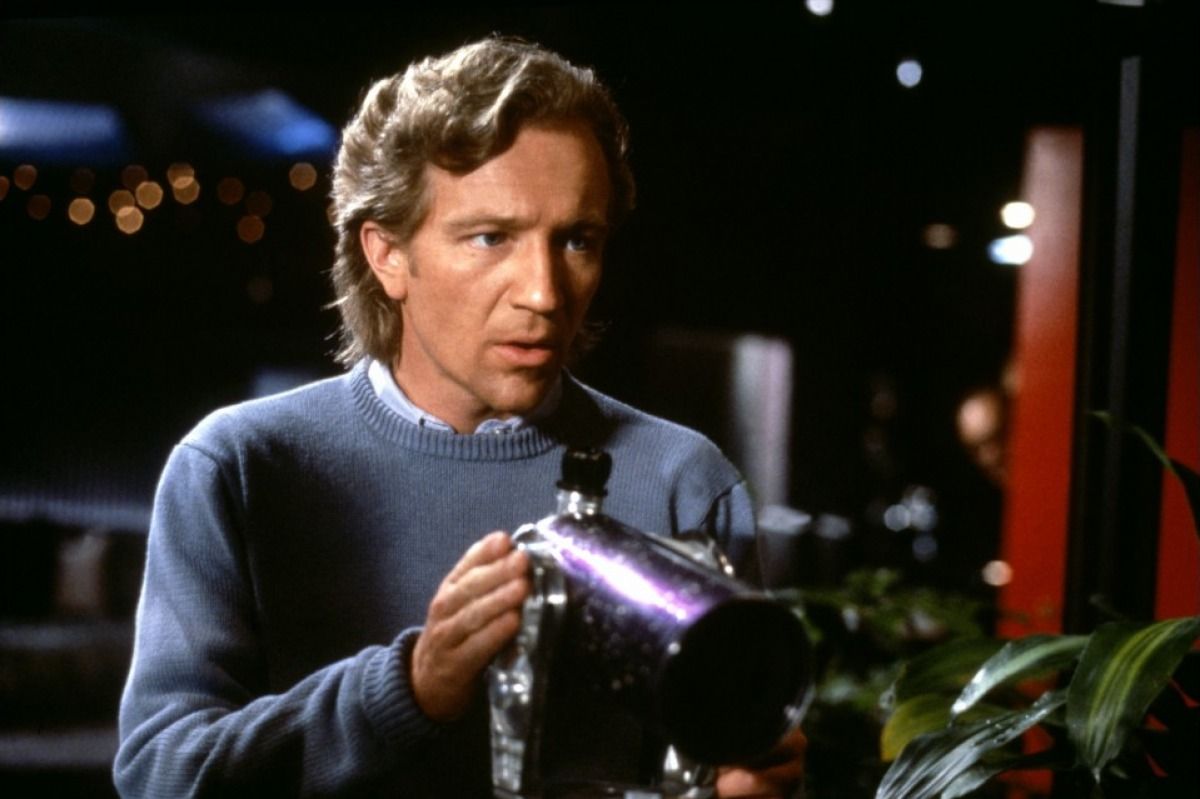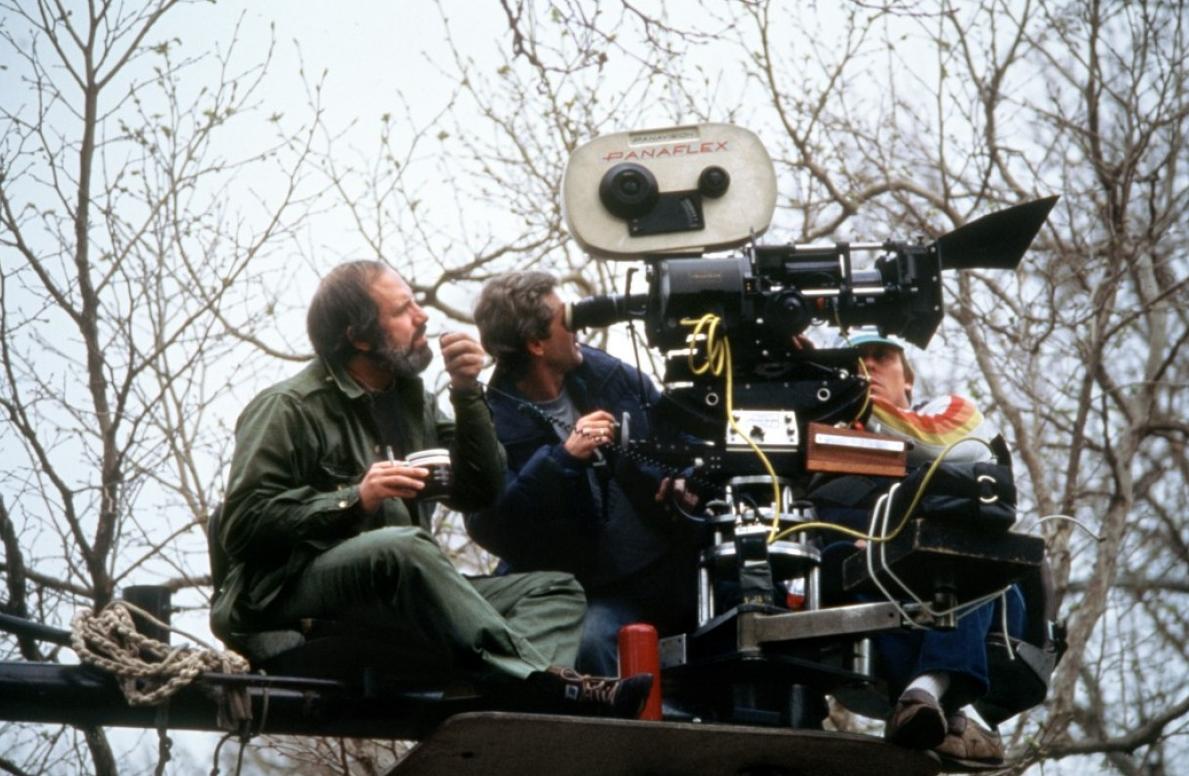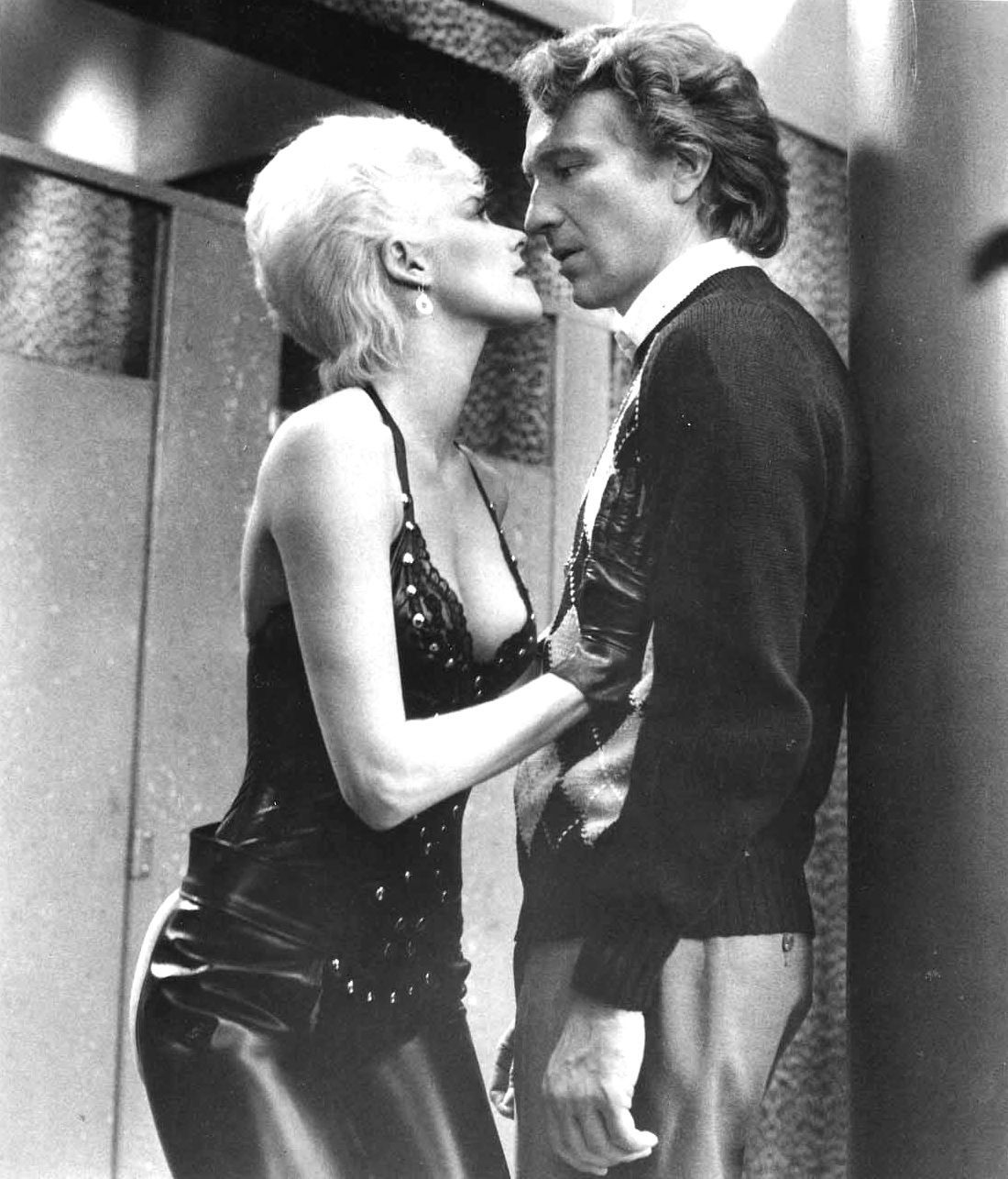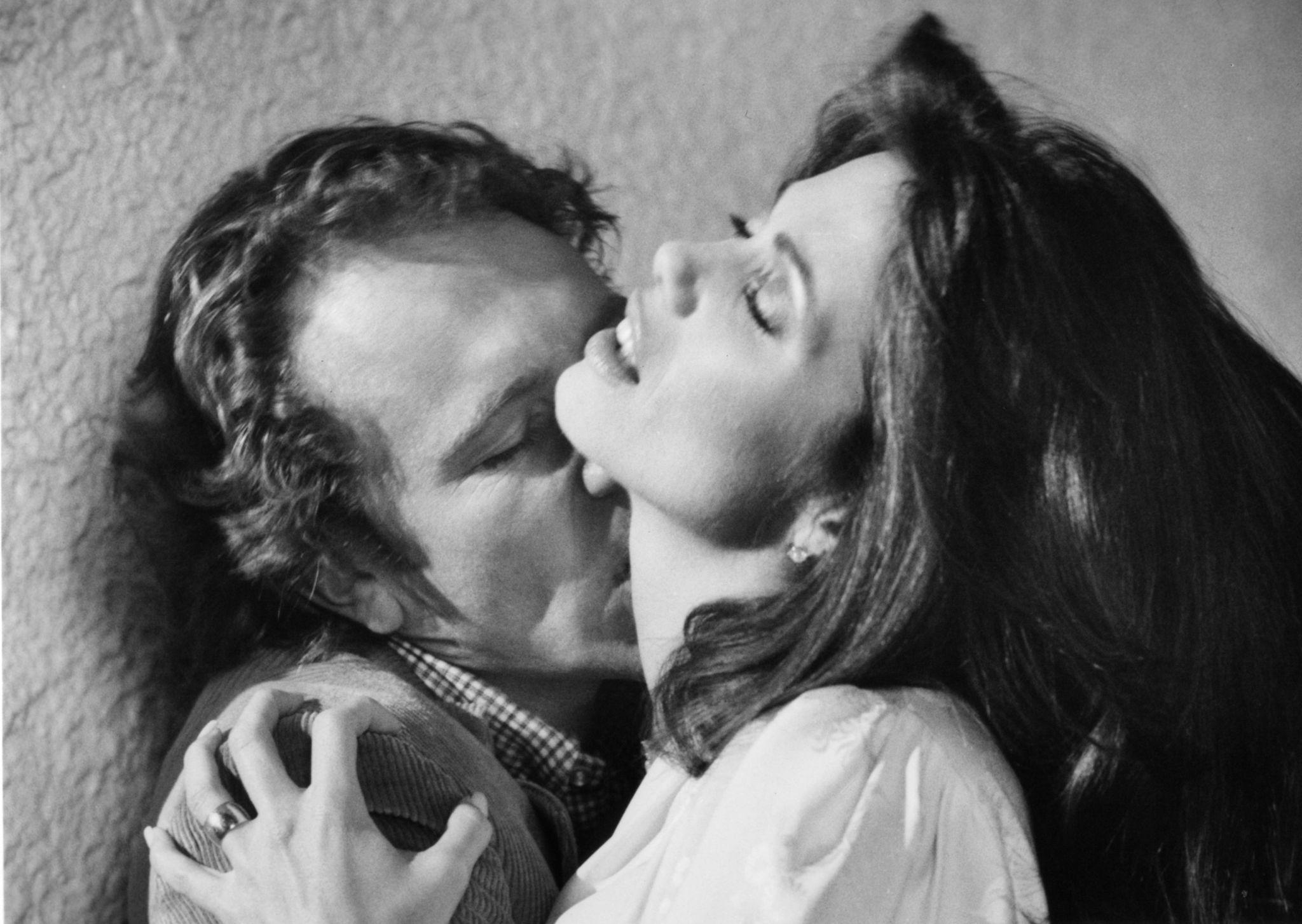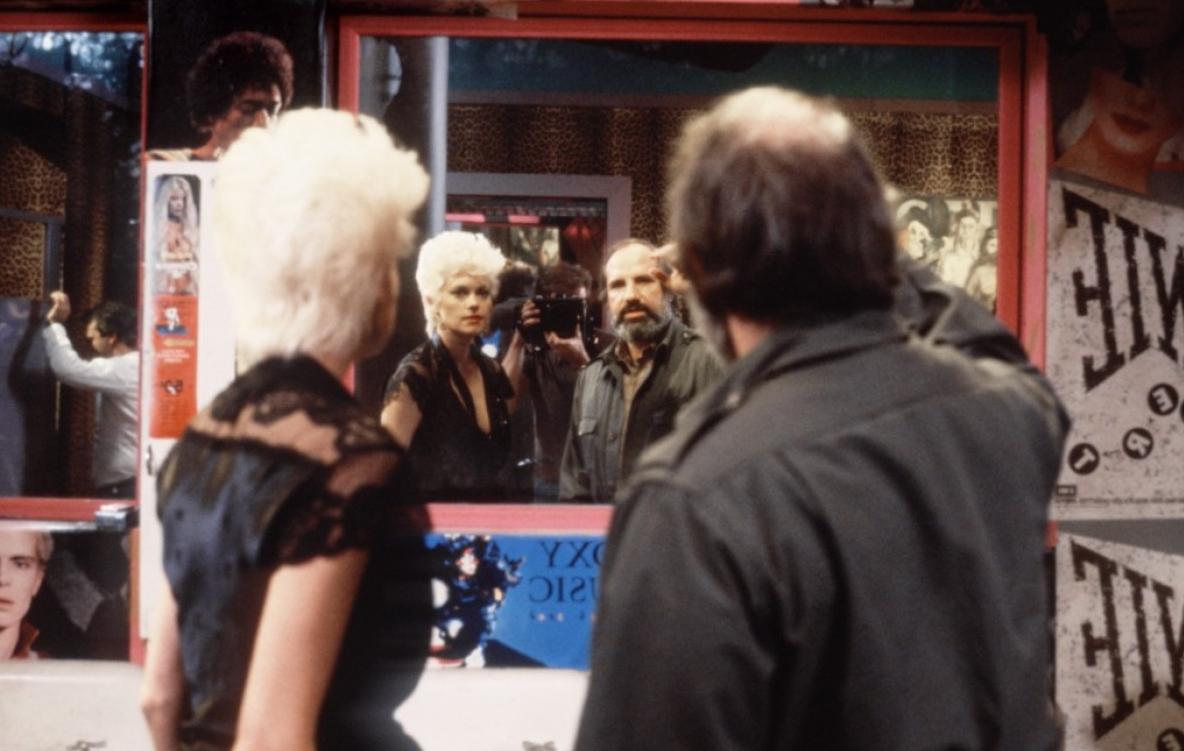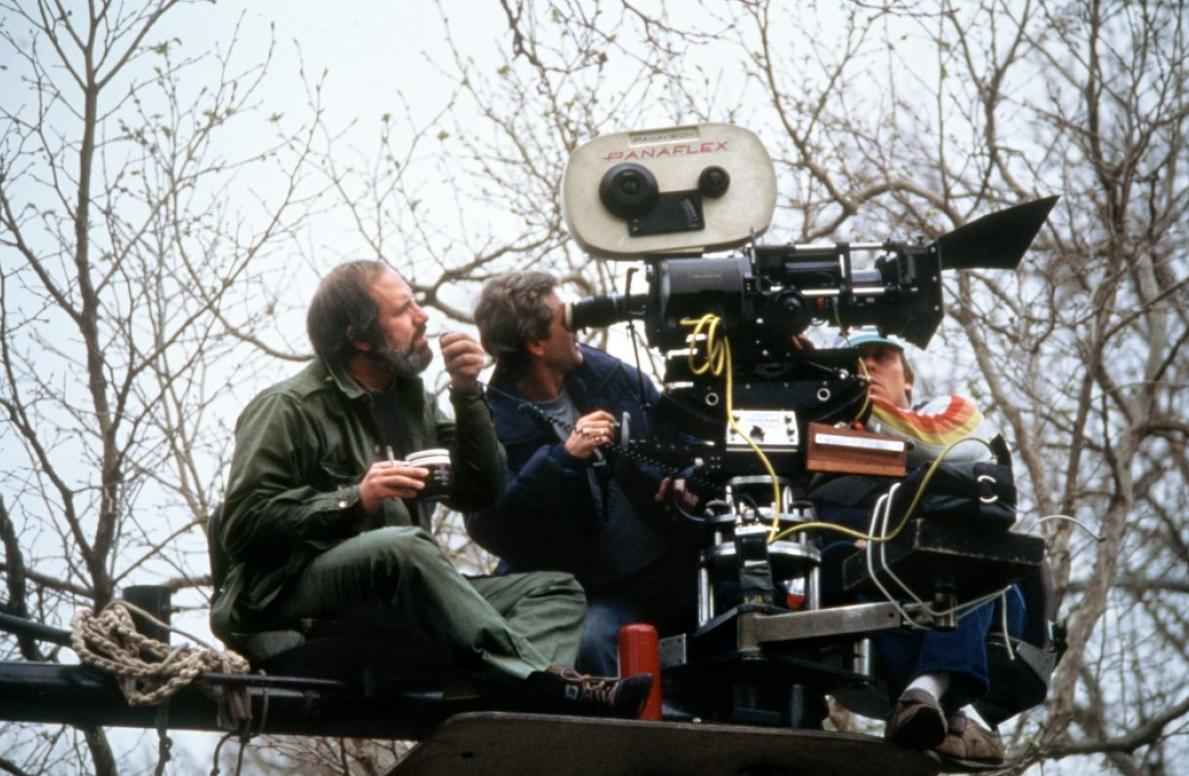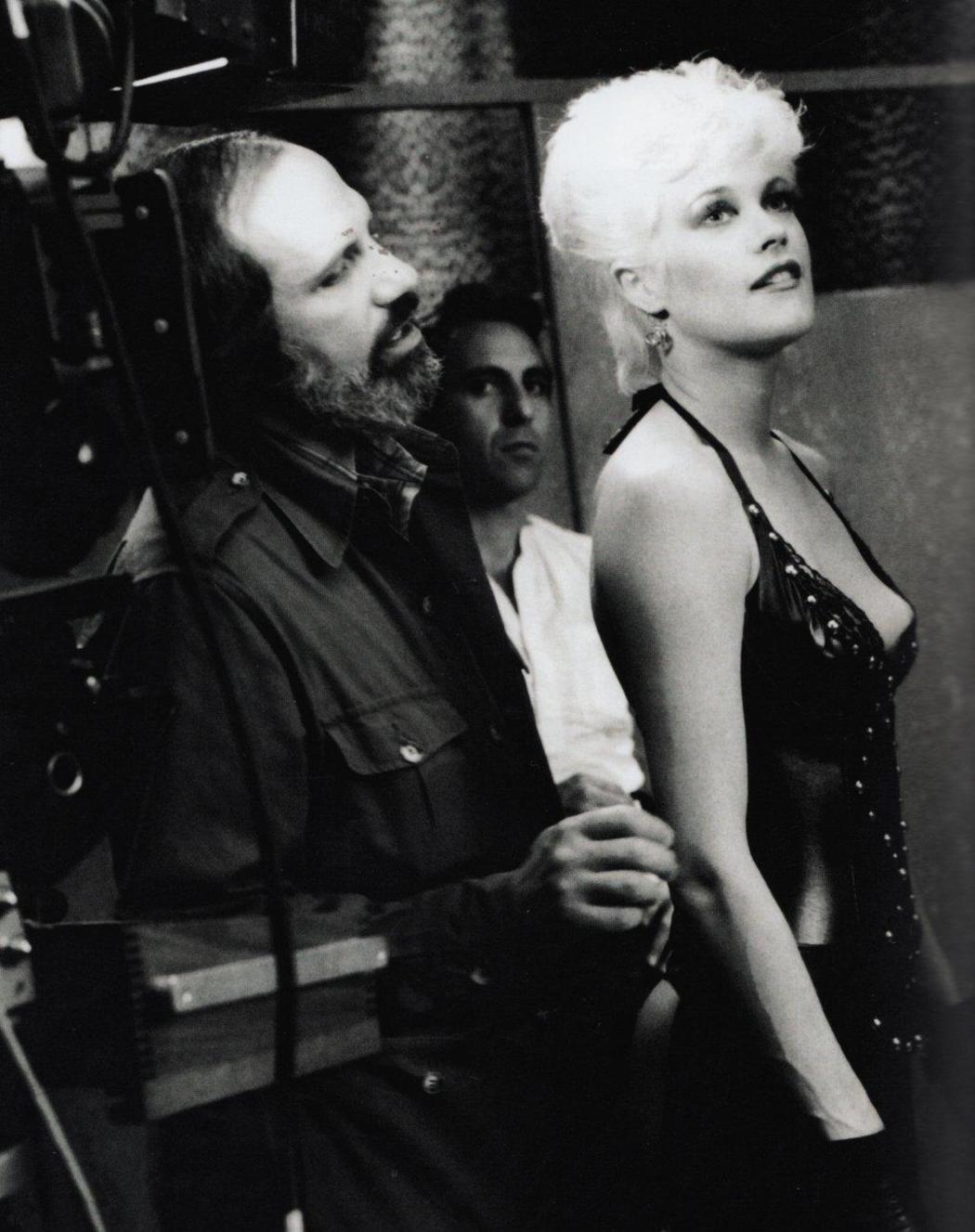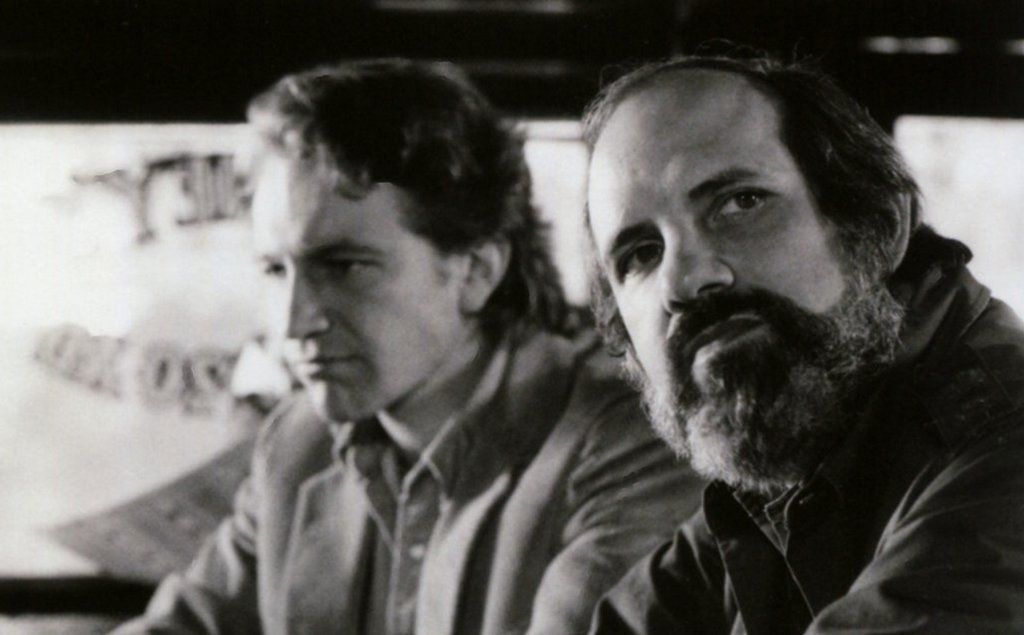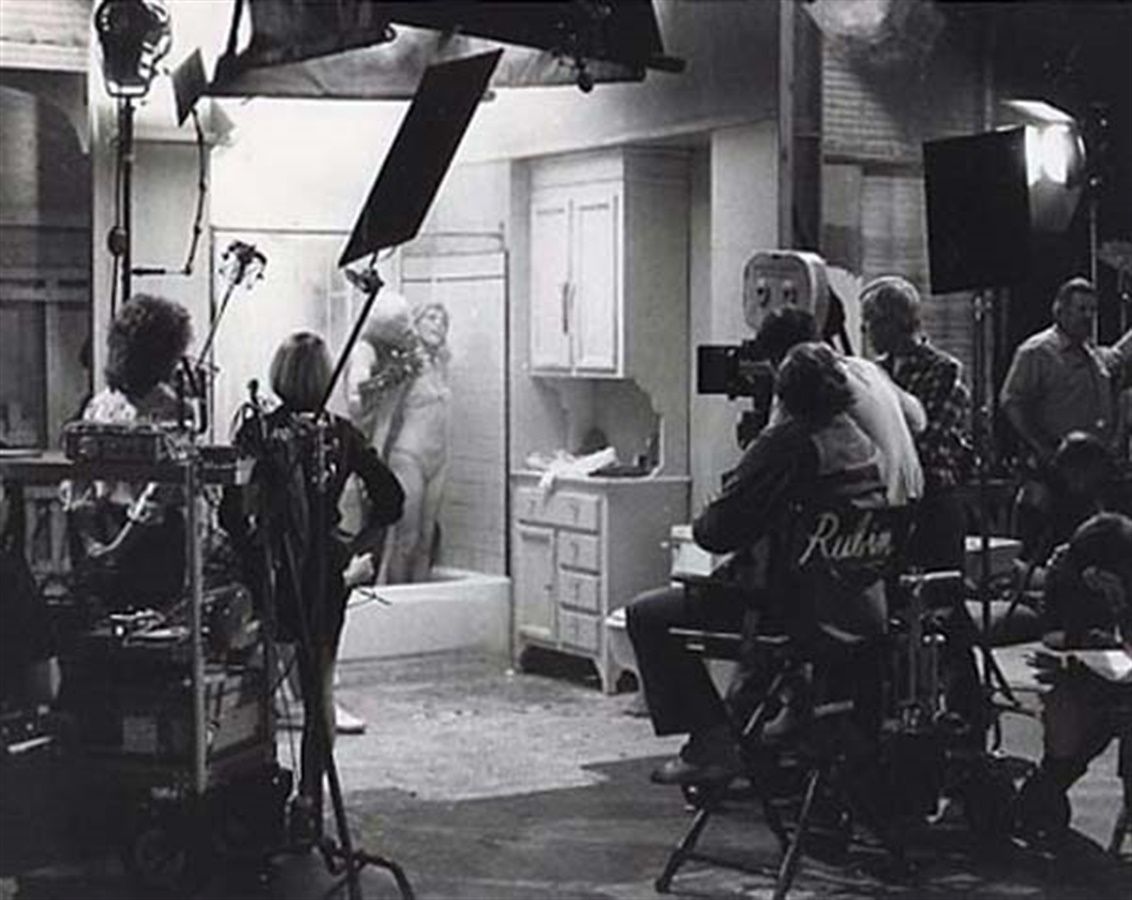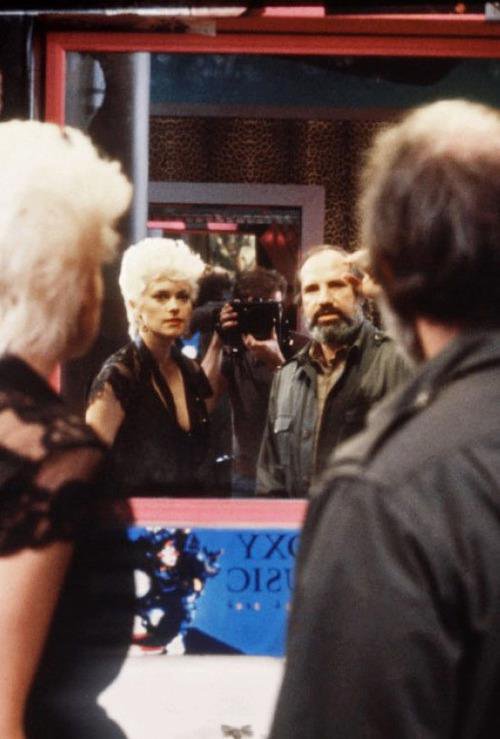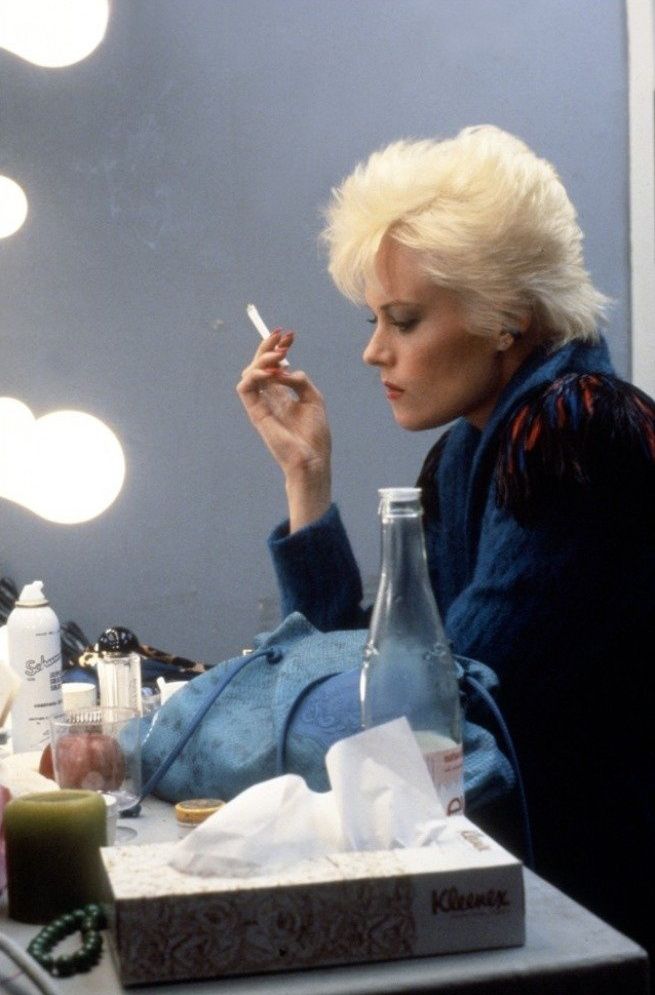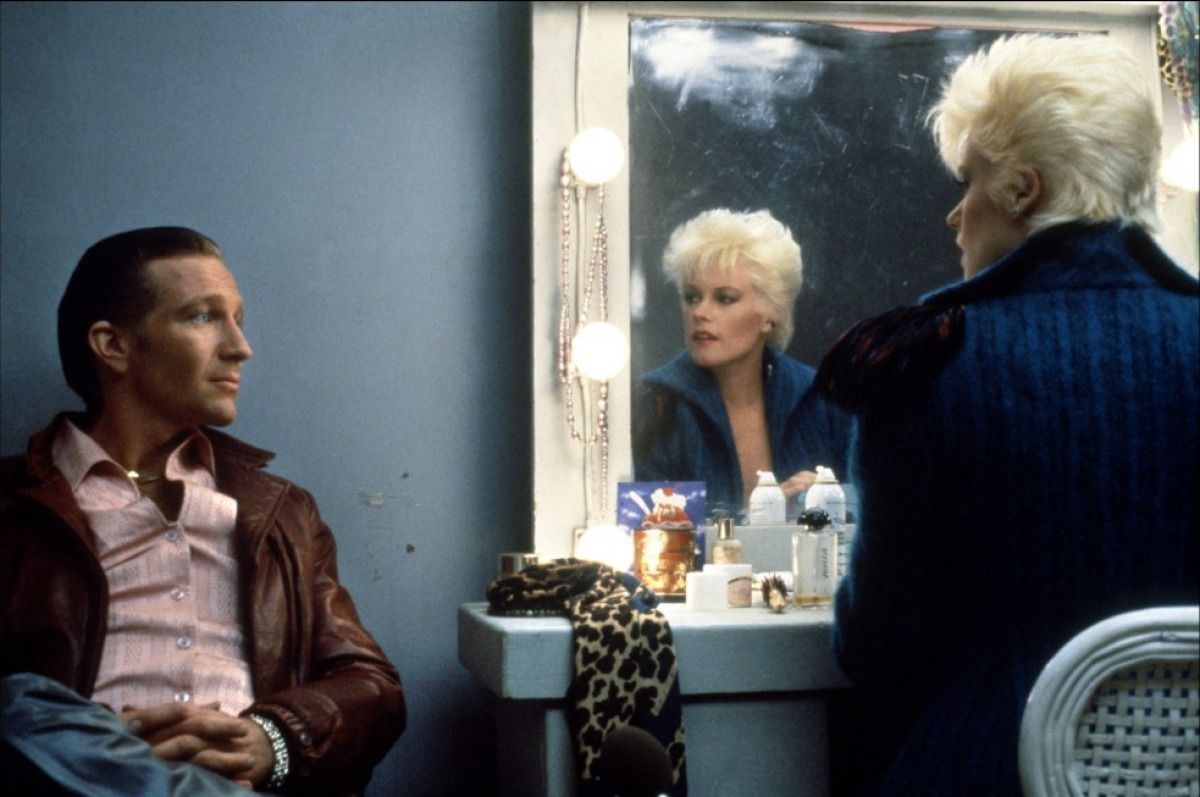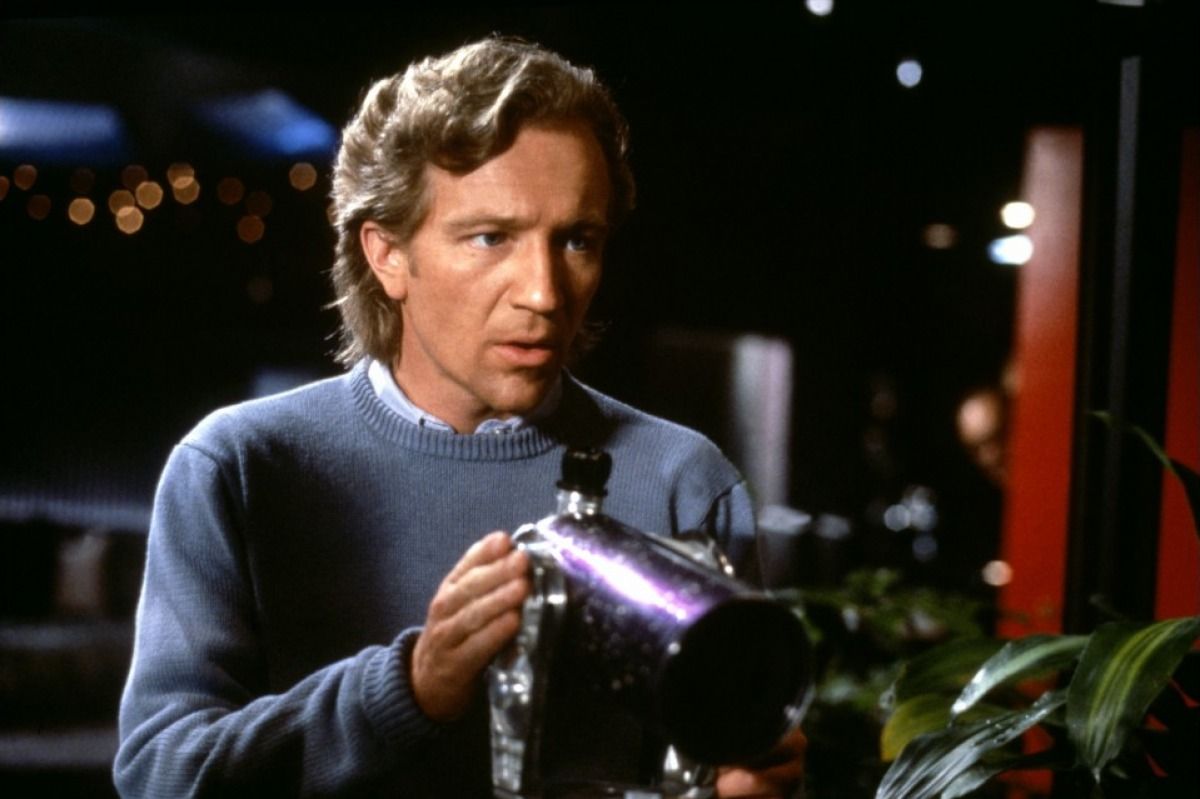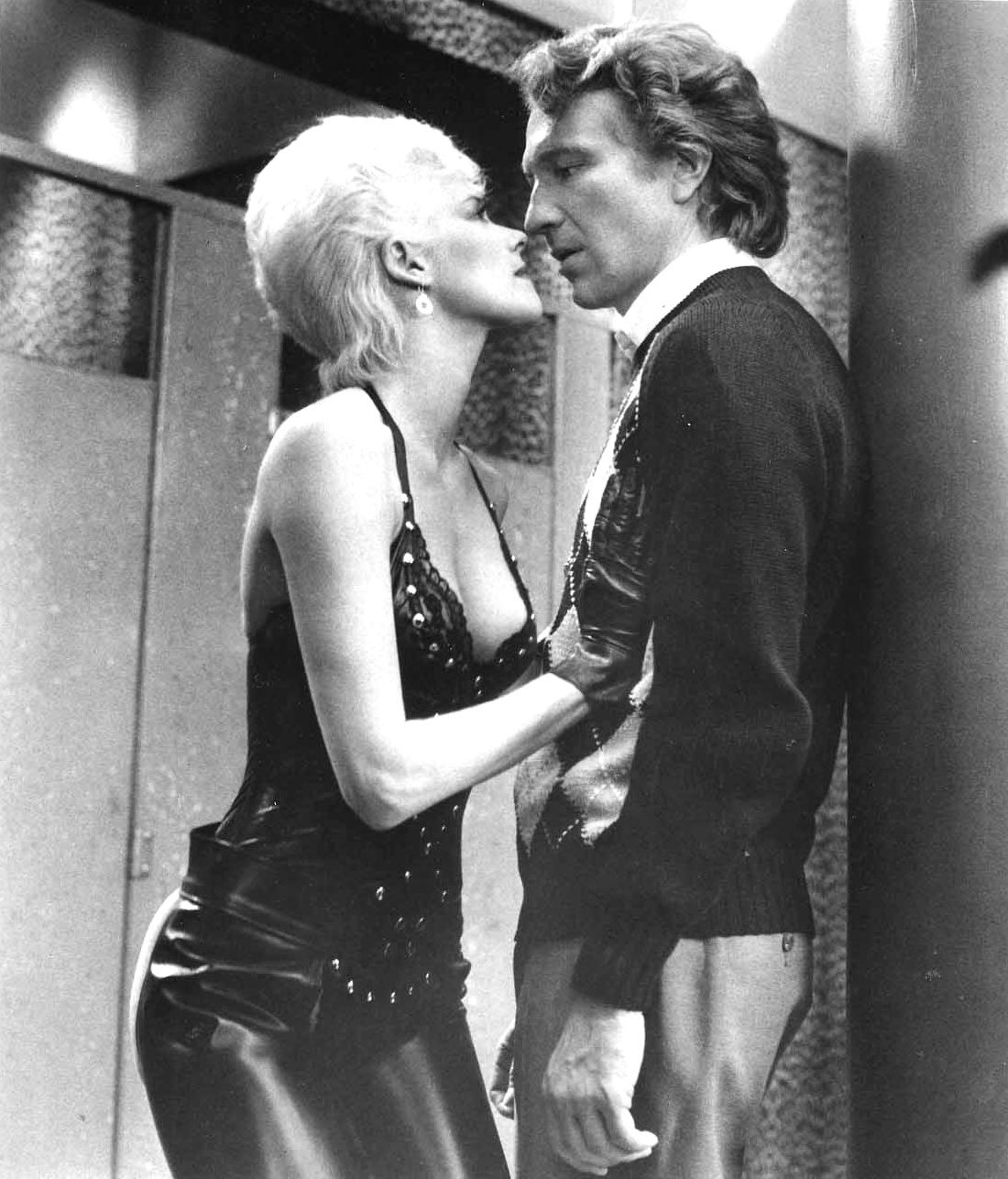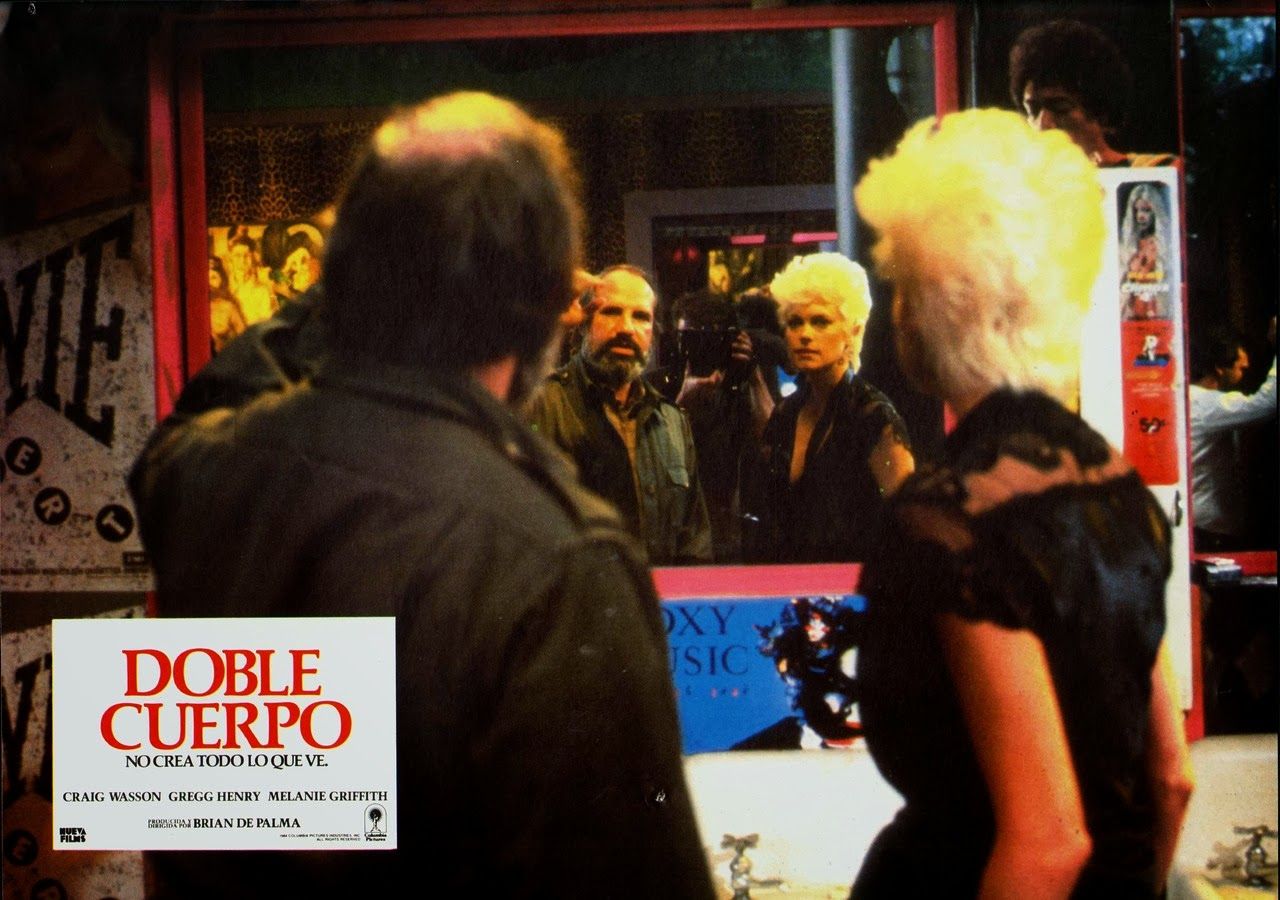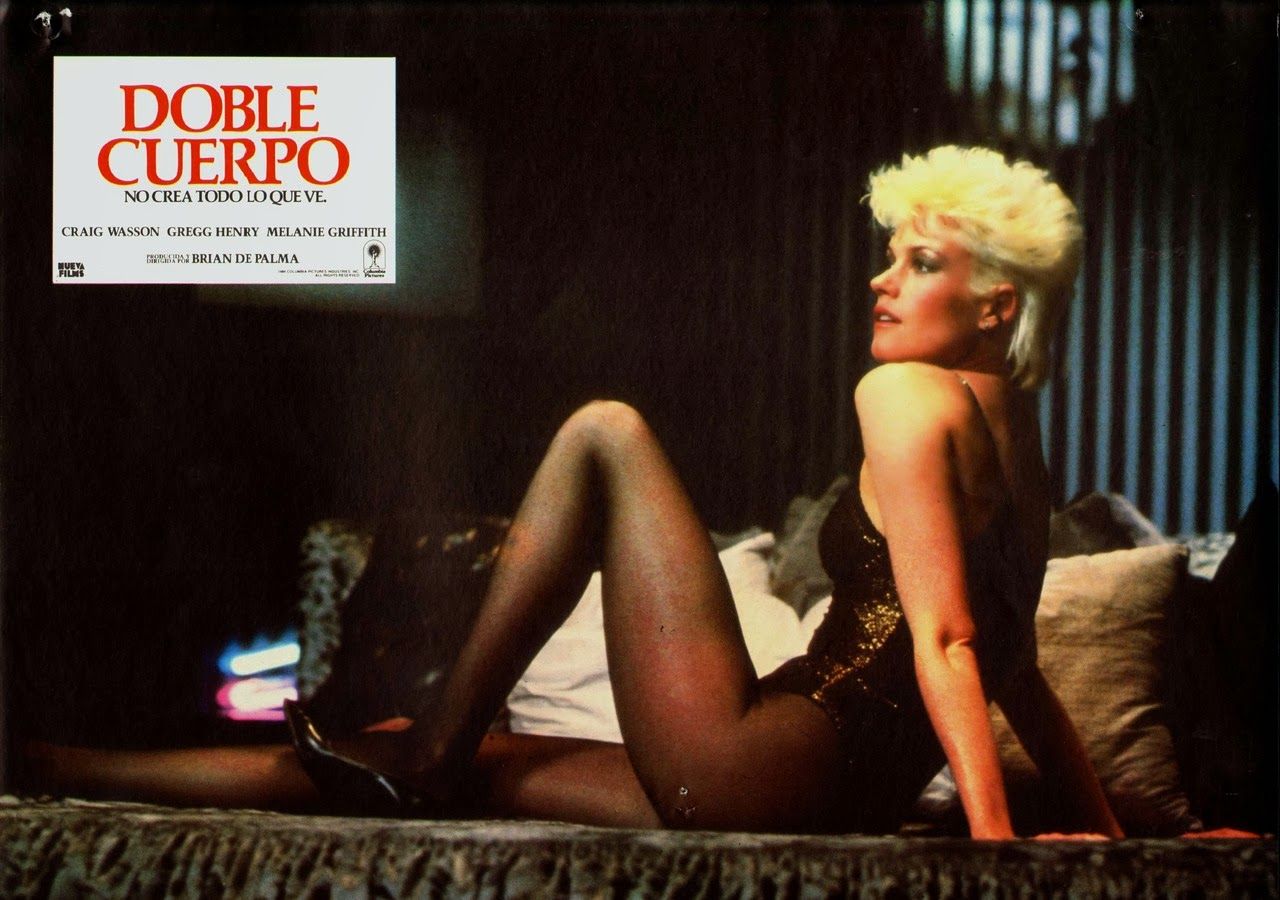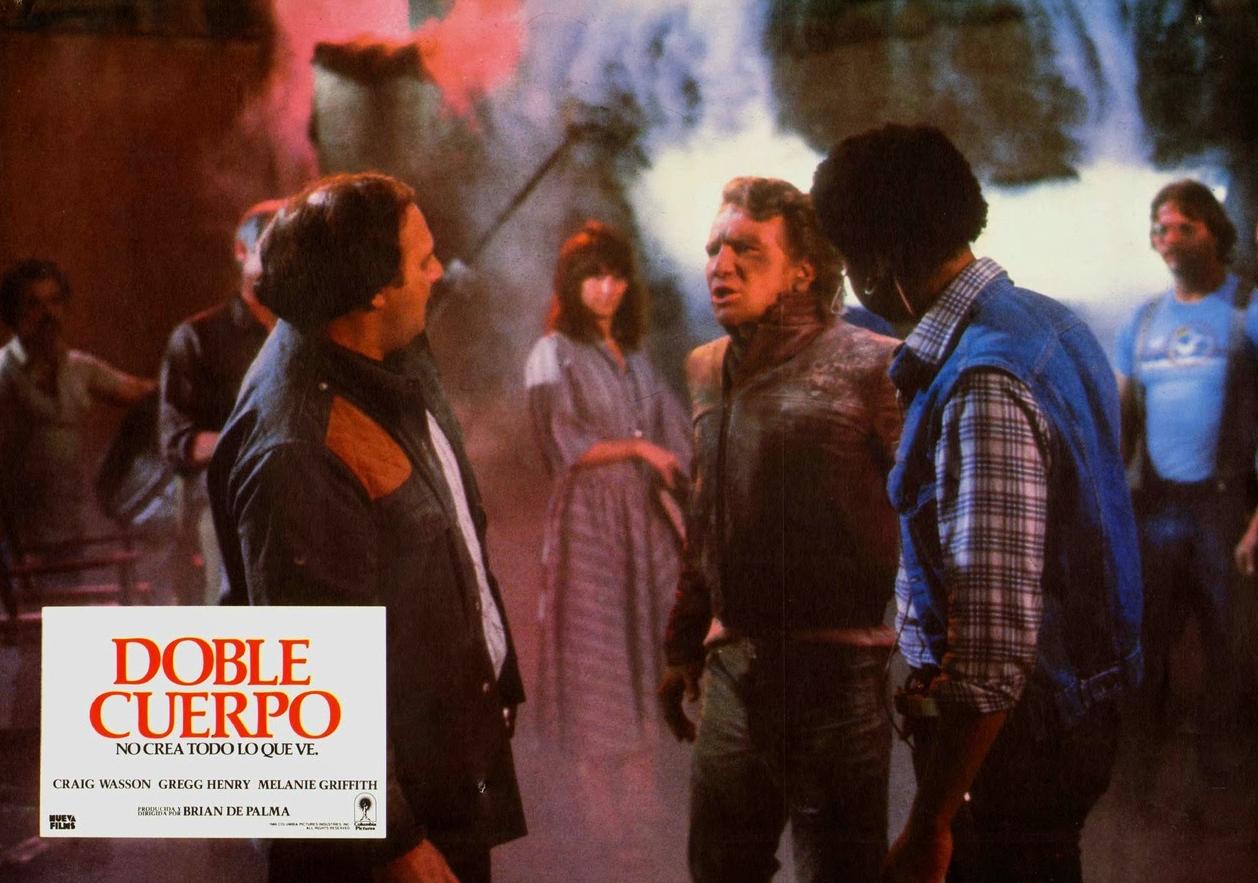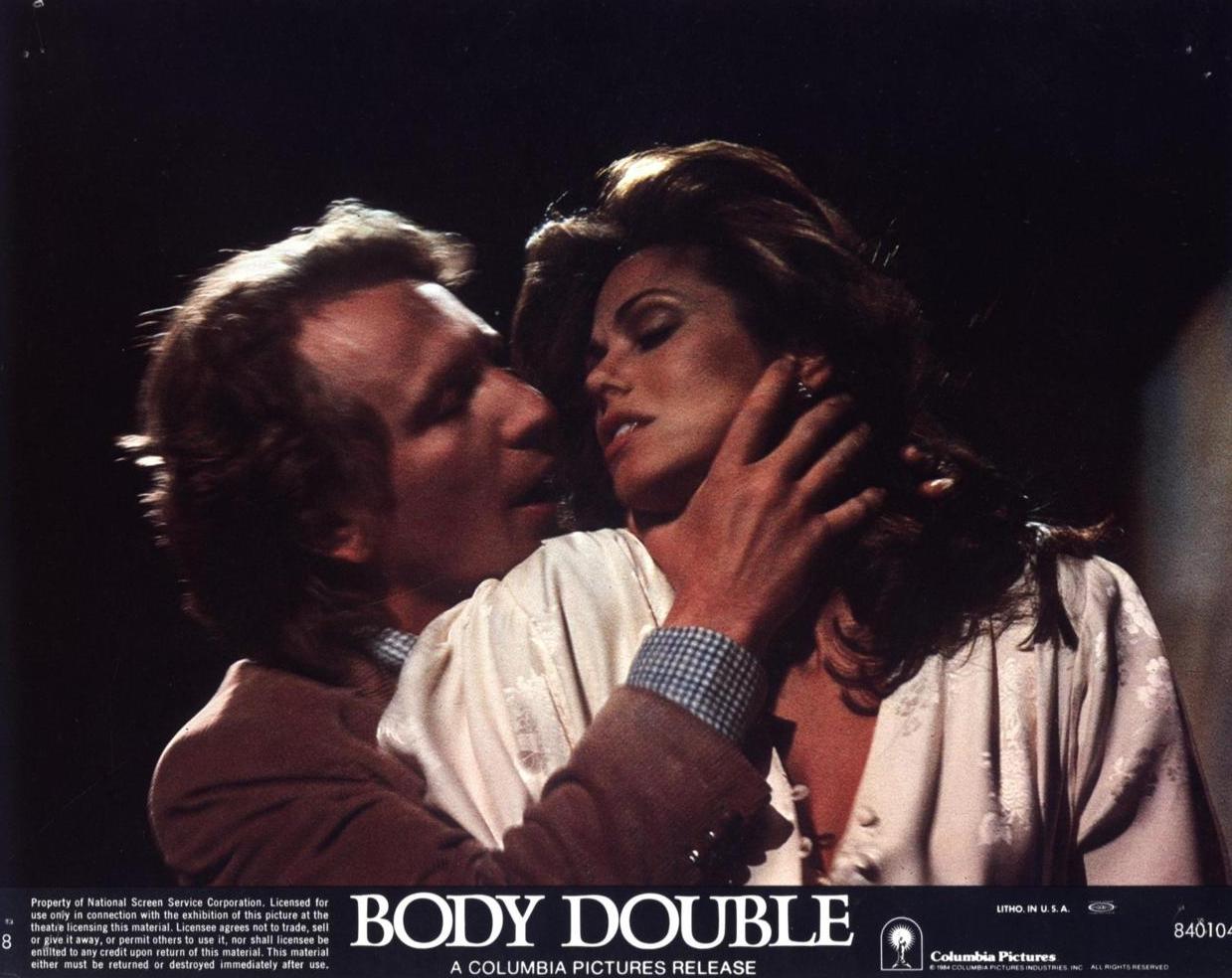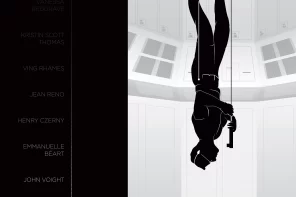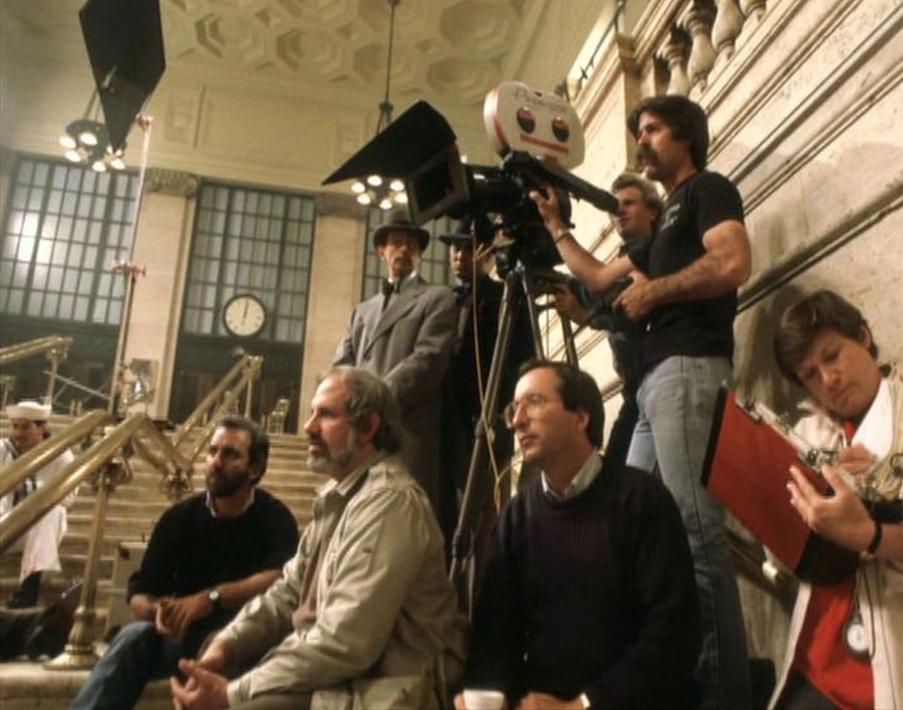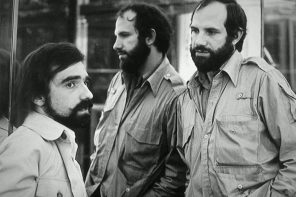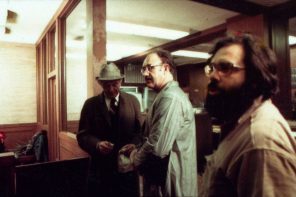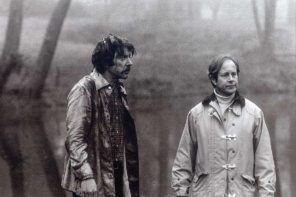In Body Double, his 1984 erotic thriller that the critics were much too quick to judge and discard, Brian De Palma succeeded in creating an unforgettable film that at the same time pays an obvious tribute to the works of Alfred Hitchcock and remains somehow completely his own, coherent with his very own stylistic preferences and vision of filmmaking. This Hitchcockian thriller introduces us to a struggling actor, played perfectly by Craig Wasson, an expressionless, wooden average Joe neck-deep in a horrific, extraordinary situation. A combination of Vertigo, as our hero suffers from claustrophobia and is manipulated with by a scheming murderer, and Rear Window, as he enjoys the sight of his striptease-dancing neighbor through a telescope, De Palma’s movie plays with similar motifs and themes, presenting an unmistakable homage to Tinseltown’s film production of the forties. Moreover, Body Double paves the way for another cult classic that would confound us in the years that followed—Paul Thomas Anderson’s Boogie Nights. In this wonderfully stylized mixture of sex, pornography, voyeurism, gore and overwhelming suspense, in which he makes the audience totally immersed in the bulletproof story and the occasionally overtly creepy atmosphere with the generous help of his main character, shaped into a helpless pawn we can so easily project ourselves onto, Brian De Palma offers us one of the most distinguishable pictures of the decade.
Written by Robert J. Avrech and De Palma himself, shot by cinematographer Stephen H. Burum, decorated with the titillating and erotic tunes of the filmmaker’s longtime cinematic companion Giuseppe ‘Pino’ Donaggio and delivering most likely the most impressive performance of Melanie Griffith ever recorded, Body Double was hardly greeted enthusiastically at the box office or especially from the critic’s couches. Roger Ebert was one of the few who wrote a favorable review. Once again ahead of his time and wise enough to look beyond current trends, he called this “cleverly constructed” film “an exhilarating exercise in pure filmmaking.” Since 1984, the perspective changed and Body Double got the recognition that eluded it upon release. William Friedkin recently stated that movies are usually made for a contemporary audience, suggesting that later praise doesn’t fully mend the wounds of old financial misfortunes, but it must be heartwarming for De Palma to see to what degree his picture’s reputation grew.
More than a few film lovers and analytics point to the fact that the film could be also seen as the director’s sharp response to his critics, who relentlessly attacked his work as blood-and-nudity-drenched indulgencies to his artistically cheap inner compulsions. It’s almost as if De Palma collected all of the harshest reviews and, based upon their ill-devised points, created the ultimate come back, the cinematic embodiment of all things that drive him as an artist. And an artist he truly is, as even the seemingly cheapest shots are made for a specific, artistically justified point. Remaining true to his style, De Palma produced one of the finest thrillers around.
A monumentally important screenplay. Dear every screenwriter/filmmaker, read Robert J. Avrech & Brian De Palma’s screenplay for Body Double [PDF]. (NOTE: For educational and research purposes only). The DVD/Blu-ray of the film is available at Amazon and other online retailers. Absolutely our highest recommendation: Carlotta’s Ultra Collector’s Box.
 Loading...
Loading...
An interview with Robert Avrech, screenwriter of Brian De Palma’s Body Double. Avrech discussed working with De Palma, and the screenplay he wrote about the Yom Kippur War that led to De Palma hiring him for Body Double: “Brian De Palma came to me with a very general idea for Body Double. I immediately responded to its Hitchcockian theme of an innocent man drawn into a murder by a beautiful woman (Deborah Shelton), who then sets out to solve the mystery with the aid of a beautiful blonde (Melanie Griffith). Both Brian and I were, and are, huge fans of Alfred Hitchcock’s movies. Together we screened Rear Window and Vertigo, and discussed the narrative strategies Hitch used in both films. So in a sense, I was working off of De Palma’s ideas of Hitchcock’s ideas.” —Behind the Scenes with Hollywood Screenwriter, Robert Avrech
Brian De Palma is grouped with the so-called movie brats—filmmakers who learned their craft in the ’60s and flourished in the ’70s and ’80s. Critics speak with admiration of Lucas’ adventurers, Scorsese’s losers, Spielberg’s kids and Coppola’s families. De Palma has staked out more controversial terrain: suspense, violence and eroticism. In some quarters, Carrie, Dressed to Kill, Scarface and now Body Double have gained De Palma the reputation of an artist in gore. In Dressed to Kill Angle Dickinson was sliced up with a razor. In Scarface a low-life drug dealer was sent to his reward with a chain saw. In Body Double Deborah Shelton is dispatched by a drill with a huge two-foot bit, which continues through the floor and showers co-star Craig Wasson in the room below with blood. As might be imagined, groups like Women Against Pornography (which protested Dressed to Kill) have not been happy with Body Double or De Palma. Senior writer William Plummer met with him to discuss his new film and such issues as sex and violence in the movies.
Where did you get the drill idea?
I do a lot of murder mysteries, and after a while you get tired of the usual instruments. You can use a knife, a rope, but now we have electrical instruments, which are truly terrifying.
But why a drill? Why one that big?
An Indian wants to be witnessed breaking into a safe by the Craig Wasson character. The prop had to be big for Craig to see him across the canyon. It was not my intention to create a sexual image with the drill, although it could be construed that way.
Why do you think people say you’re contemptuous of women?
Because I have a lot of women victims in my movies. I also have a lot of men victims. But women in peril work better in the suspense genre. It all goes back to the Perils of Pauline.
They don’t “work better” because you are a man?
No. If you have a haunted house and you have a woman walking around with a candelabrum, you fear for her more than you would for a husky man.
So it has to do with female frailty?
Absolutely. It’s part of the suspense form. Remember Roy Scheider in The Still of the Night? He was a man in peril, but it didn’t really work. A blind Audrey Hepburn wandering around in Wait Until Dark, trying to get away from some psychopath trying to kill her, I mean, come on, that was terrifying!
You don’t buy the feminist view that men learn from movies how to assault and rape women?
No, no. I subscribe to the Aristotelian theory. I believe that movies purge you of these emotions.
But there are cases where viewers saw The Texas Chainsaw Massacre and—
Sure, there are all kinds of cases.
But you don’t feel any responsibility?
I don’t feel there’s any connection. I think if you’re dealing with a psychopath, anything can set him off.
Then we shouldn’t hold our artists accountable for violence in their works?
No.
Anything goes?
We live in a society of free access, free will. We can certainly guide our children about the things we don’t want them to see.
I’ve heard people say that your movies are amoral, if not immoral.
I don’t think morality applies to art. It’s a ludicrous idea. I mean, what is the morality of a still life? I don’t think there’s good or bad fruit in the bowl.
Is Body Double pornographic in your view?
No. Most people who talk about pornography have never seen it. They use “pornographic” to cover a multitude of sins. A pornographic movie is one that is constructed to make you climax.
Okay, let’s say that your movies are not geared to bring the audience to climax or to teach men how to mutilate women. What kind of emotions are you trying to arouse in moviegoers?
I’m interested in shaking up the audience’s sense of reality, jolting it out of conventional ways of perceiving things. That’s what excites me.
Sounds like an old-fashioned notion of the avant-garde.
I guess it is. I am, you know, a creature of the ’60s. My first successful, movie had an X rating. I made Dionysus in ’69, a documentary of one of those plays that actually got the audience totally involved in the drama. It’s based on The Bacchae by Euripides. At one point Dionysus says to Pentheus, “What you need is a girl!” And Pentheus says, “I’m king. I can have any girl I want.” To back his boast, Pentheus has to go into the audience, grab some girl and try to have intercourse with her onstage. Let me tell you, there was enormous tension in the audience. Pentheus would be among them; he’d be kissing a girl, stroking her—
These are girls in the audience?
Yes. Of course 99 times out of 100 the girl rejects him, but nobody knows what’s going to happen. Everybody gets all shook up, out of control. This is what I’m trying to do today—to introduce avant-garde concepts into very large commercial pictures.
Why do people shriek or laugh at inappropriate moments at De Palma movies?
Because they’re so uneasy. They can’t deal with it. Later, in an effort to explain their reactions, they try to rationalize the experience. They say it’s too violent; it’s contemptuous of women. Like Rex Reed, they say it’s horrible garbage. Or the other big cop-out: It’s all satire. They can’t deal with the drill because it’s so viscerally disturbing, so they say it’s parody. I guess the problem is I’ve always been the urban guerrilla. You know, I got a house in California and an apartment here in New York, and I’m very successful, but I’ve still got these ’60s impulses.
So what you’ve got is everybody out of control. The actors in their separate scripts are out of control. The audience is out of control. You, it seems, are the only one in control.
Yes. I’m conducting.
Numerous stories quoted throughout De Palma biographies attempt to explain the director’s fascination with death. Oft told is the one about De Palma’s father, a surgeon who let his son (the youngest of three boys) witness medical operations. Many take this as the signifying stressor for De Palma’s liberal use of blood in his films. But this is too superficial a response. Much more pointed and interesting is this story, which Laurent Bouzereau relates in his book ‘The De Palma Cut’:
During his early years, De Palma experienced an event that left with him a sensation of intense terror: his two brothers were playing and young Brian hid behind a refrigerator and got stuck; eventually, he had to cry out for help. Evidently, this event reinforced the inferiority complex De Palma felt toward his brothers, and added to it the fear of being humiliated for losing control.
This anecdote touches on a recurring motif in De Palma’s work, which feeds into his portrayal of death. Helplessness is a constant, an inferiority (or impotence) of both physical and emotional means. A De Palma protagonist rarely has control over the events in which they find themselves embroiled. This springs from a lack of communication, often a verbal or sexual remove from the people around them. Emotions run rampant, as illustrated cinematically by De Palma’s luxurious, fluid camera movements, and inevitably someone ends up dead.
The anecdote specifically recalls De Palma’s film Body Double (1984), the director’s last all-encompassing thriller of the ’80s, which treads on the post-modern impulses he will explore in Raising Cain (1992). Craig Wasson’s Jake Scully is the ultimate example of an impotent De Palma protagonist. A Z-movie actor playing a Z-movie actor may seem like a too-obvious joke, but it is this very lack of star persona that gives Body Double its expressive power. If it was Kirk Douglas or John Travolta decked out in vampire garb in the opening movie-within-a-movie, then the slow disintegration of Scully’s facial expression into abject terror would pack a significantly lesser punch. Minus the buffer of a recognizable face we’re with Scully from the get-go. It’s a distillation of De Palma’s relationship to his audience—his best films are about identifications (between characters, audience, and director) within cinematic moments. —Keith Uhlich, Senses of Cinema
Brian De Palma’s golden rules of shooting a sex scene. Courtesy of MovieMaker Magazine.
1. You have to have the actors and actresses beautifully photographed
Eroticism is a bit of an illusion. You have to really capture the naked body, like beautiful paintings of nude women. I stress the fact that they must be exquisitely photographed. With the advent of the digital revolution, love scenes are not very well lit, and directors don’t seem to pay much attention to the way the actors look. Just the fact that you can see them seems to be enough. And to me, that isn’t the illusion I like to create on screen.
2. Find the right cinematographer
In Body Double, I spent a lot of time searching for the right cinematographer. I actually did screen tests for different DPs. I had these incredibly attractive women, and I wanted to make sure they were lensed correctly. That’s when I discovered Steven Burum, and I used him for many films after that.
3. You need some kind of conceptual idea
Today, there’s such an incredible amount of lovemaking and nudity on cable television, and in pornography on the Internet. You see bodies photographed from every conceivable angle, doing every conceivable thing, so you really have to think hard to approach eroticism with a fresh idea. Just showing people kissing, people fucking—it’s of no interest to me.
4. Don’t underestimate the power of a kiss
Watching Alfred Hitchcock, the first thing you learn about kissing is that you have to see the actor’s faces. You have to see them reacting to the kiss. Watch Cary Grant kissing Ingrid Bergman in Notorious. A lot of filmmakers think that just showing people kissing each other, and having a very good time, is enough. But so often their eyes are closed, and you can’t see their faces. The audience is completely shut out. In Hitchcock movies, you can see that they are kissing each other on the neck, and talking. They’re kissing lightly on the lips, and you can see their eyes. You see how they’re reacting. That’s what creates the eroticism of the scene.
5. Using onscreen sex scenes only for shock value is passé
I don’t think the big screen is the place where most people go to see erotica. Cable television and pornography don’t face the same restrictions as theatrically-released films, so they can be a lot more explicit. So don’t try to shock a movie audience with sex. It’s passé. As far as remembering a shocking sex scene in a movie on the big screen? I can’t really think of one. Angie Dickinson’s shower scene in Dressed to Kill would be kind of decorous today. I don’t think too many people would be shocked. On cable, people are being stripped and raped all the time. Just a naked girl in the shower? Please!
6. You have to have foreplay
You’ve got to have a way to build up the tension and mystery. Just showing two people kissing and then making out in bed? There’s no illusion there! It’s very meat and potatoes. You might as well just turn the page! You’ve seen that scene a thousand times. There’s a lot of playfulness to eroticism. You have to slowly evoke it. That’s what’s so beautiful about Passion, I think. It’s about these two dancers and the connection with each other that ultimately ends up with the simplest kind of kiss. But it’s so exquisitely drawn out that it has a tremendous amount of sensual impact. You have to have the foreplay.
7. Watch Ryan’s Daughter
There’s one great lovemaking scene in Ryan’s Daughter. She finally has a rendezvous with a military man. It’s exquisitely well done. You really feel the sense of nature surrounding the eroticism. Because [director David] Lean had an idea! Take a girl in a field and make love to her. The feel and the sensuality of the nature around them as they’re getting into the lovemaking—it’s quite good.
[DE PALMA’S] VISION
An audiovisual essay and text on Brian De Palma’s fantasy-scenarios and his motifs relating to the idea of vision by Cristina Álvarez López and Adrian Martin. Courtesy of MUBI’s Notebook.
Here are several photos taken behind-the-scenes during production of Brian De Palma’s Body Double. Production still photographer: Ralph Nelson © Columbia Pictures Corporation, Delphi II Productions.
Get Cinephilia & Beyond in your inbox by signing in

